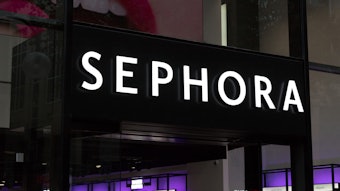Digital think tank L2 released a new report, “Intelligence Report: Omnichannel Retail” (with selections available for download), that examines the efforts of 100 retailers to drive customers from clicks to bricks and back again.
According to L2, in the first quarter of 2014, e-commerce growth at Home Depot (54%), Costco (48%), Macy’s (31%) and Walmart (30%) bested Amazon, who registered sales growth of 20%. Macy’s in particular was applauded, as its stock increased eightfold from its bear market bottom in March 2009, outperforming both Apple and Amazon.
The report highlights how although the “showrooming” phenomenon—when consumers browse products in store and purchase online—gathered a great deal of press and was big in 2012, appears to have been a bit of a fad. Just two years later, consumers are becoming more prone to “webrooming,” or researching online or on their mobile device before purchasing in-store. L2 research shows the percentage of in-store sales influenced by the digital world have more than doubled in the past year, jumping from 14% in 2012 to 36% in 2013. Studies also show 72% of consumers “showroom” before they buy, but 78% of consumers “webroom” before making a purchase.
However, despite leadership from popular department and big box stores, most retailers remained stalled. Of the 71 brands that were tracked in the L2 2013 and 2014 omnichannel retail studies, only six launched in-store inventory visibility on their website, including Abercrombie & Fitch, Ann Taylor, Kiehl’s, Neiman Marcus, and Saks Fifth Avenue. Luxury stores are even further behind. None of the 13 retailers that were tracked introduced inventory visibility, with the exception of Gucci who joined with Tournaeu as the sole luxury retailers with in-store inventory visibility.
According to L2, studies show 44% of all luxury good sales are online-influenced with only 4% being purchased via e-commerce. Of the eight department stores benchmarked in this year’s study, 75% provide inventory visibility, with Barneys and Bergdrof Goodman being the sole holdouts. All big box retailers embrace the functionality—not surprising based on the fact that they are up against Amazon and other e-players.
Retailers report that in-store accuracy is a major operational barrier to the launch of a successful buy-online, pick-up in-store program. Fifty-one percent (51%) of retailers report between 2-10% of in-store pick-ups cannot be fulfilled because of inaccurate store inventory. This can be an extremely large disappointment to the customer because, in most cases, they have already paid for the product.
Because of the digital age becoming more and more relevant, consumers are finding it increasingly useful to have the answers to their buying questions available at their fingertips. Retailers that have an omnichannel website allowing consumers to create an account and locate items they want online or for pick up in-store, an e-mail listing that sends discounts and incentives, and a mobile app are more likely to reach a higher level of customer satisfaction and do better over-all as a company.










